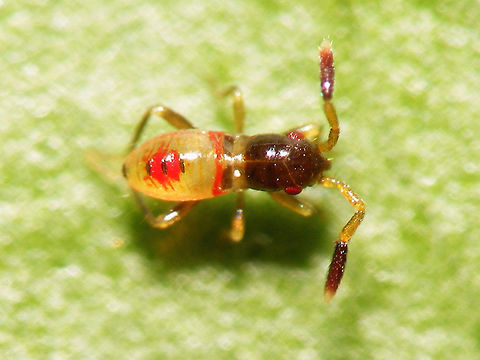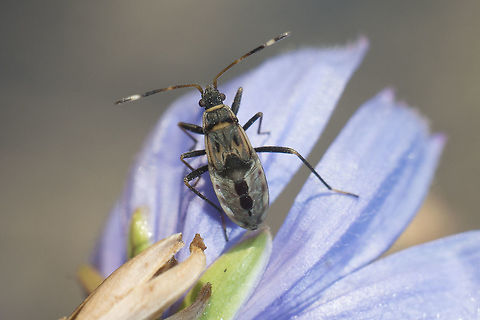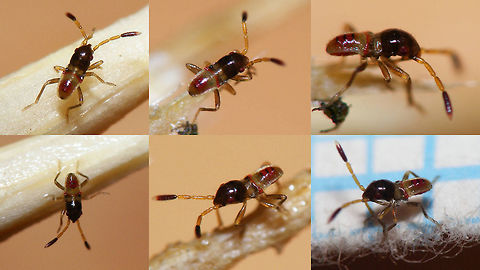
Appearance
The bugs become 6.1 to 7.5 millimeters long. They have conspicuous white spots on the cuneus of the hemielytra and two parallel pale spots on the otherwise dark sign (Scutellum). The front of the pronotum is narrower than the head with facet eyes. The tips of the legs (femora) of the middle and posterior legs are broadly colored black. The fourth sensing member is basal pale colored.
Habitat
The species is common throughout the Mediterranean. In the north, it spreads to the south of Great Britain and across the southern eastern seas to the center of Russia. It occurs in Germany almost everywhere and is only rare in the north and north-west and can be missing locally. In the south, as in the south-western sand areas, for example, it is often frequent. In Austria it is mainly spread in the East. [1] In Great Britain, it occurs locally in the South of England and Wales between Essex and Pembrokeshire. [2] The populations are predominantly open, dry, warm sandy soils with soil litter and low fouling, but also rudder surfaces and fallow land. [1]
Food
The animals feed on the fallen seeds of various plant species. In their habitats are frequently growing Calluna vulgaris, Cytisus scoparius or Artemisia campestris.References:
Some text fragments are auto parsed from Wikipedia.
http://naturdata.com/Beosus-maritimus-21207.htmhttp://www.galerie-insecte.org/galerie/esp-page.php?genre=Beosus&espece=maritimus
http://www.gbif.org/species/100542168
https://www.britishbugs.org.uk/heteroptera/Lygaeidae/beosus_maritimus.html